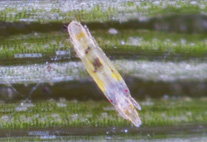Abstract
Borneo is considered a centre for biodiversity in both the terrestrial and aquatic environments. However, information on the diversity of parasites and trypanorhynch cestodes infecting sharks and rays in particular is rather limited at present. During a large-scale study focusing on the parasite diversity of elasmobranchs from Malaysian and Indonesian Borneo a total of 520 spiral intestines of elasmobranchs were collected during seven years of extensive sampling. Trypanorhynch cestodes were discovered in 163 specimens belonging to 43 different elasmobranch species (i.e. 17 species of sharks and 26 species of rays). Overall, 50 species of trypanorhynchs were recovered from the hosts' spiral intestines, some of which represented new species and genera that have been subsequently described. Numerous new host records are added for previously described species. Of the 50 trypanorhynch species present in waters off Borneo 30 (= 60%) were recovered from rays, while 20 species (= 40%) were found in sharks. The geographical distribution of these cestode species was dominated by taxa that occur in the Indo-west Pacific (= 30%) followed by species endemic to Borneo (= 28%). Nine species (= 18%) are found both in Borneo and Australia or have a cosmopolitan distribution. The present study also assessed the host specificity for 16 species belonging to three prominent trypanorhynch genera recovered from elasmobranchs from Borneo (i.e. Dollfusiella Campbell & Beveridge, 1994, Prochristianella Dollfus, 1946 and Parachristianella Dollfus, 1946). Most species (= 63%) were euryxenous utilizing hosts from different orders or even classes, with only a single species (i.e. Dollfusiella imparispinis Schaeffner & Beveridge, 2013) being oioxenous utilizing a single host species. The remaining species (= 31%) were mesostenoxenous utilizing different host species from a single genus. The least host specific taxa were the three representatives of Parachristianella and Prochristianella clarkeae Beveridge, 1990.

